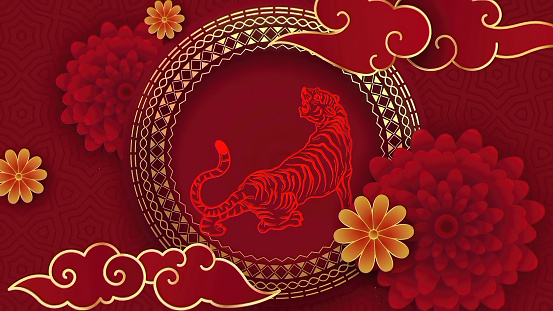Year of the Water Tiger: Origins of the Lunar New Year
February 14, 2022
February is well known for holding one of the largest holidays of the year: Lunar New Year. The holiday has now started spreading its luck and festivities around the world as 2022 begins to unravel.
You may know Lunar New Year for its bright colors, fireworks, parades, and zodiac animals that represent each year, all elements that are key to the holiday. However, the Lunar New Year has a deeper meaning. So, what is the tradition and history of this holiday, and how do people celebrate it?
Lunar New Year started during the Shang Dynasty in China, around 1300 B.C., originally celebrating the harvesting of crops. Now, it’s celebrated internationally, but primarily in Asian countries, and marks the start of a new year.
Lunar New Year starts on February 1st and lasts 15 days in China. Today, it is estimated that 1.5 billion people celebrate the holiday each year. It begins with the Spring Festival, which lasts 11 days and ends with the Lantern Festival, which lasts four days.
Traditions and celebrations vary from country to country. In China, you’ll see the lighting of firecrackers or fireworks, which is said to scare away the evil monster Nian. You’ll see the exchange of red envelopes filled with lucky money known as hongbao, as well as the house and clothing decor of red, which is said to bring prosperity and luck and ward off evil spirits and negativity.
In Vietnam, Lunar New Year is more commonly referred to as Tết [te-t] and is one of the most important Vietnamese holidays. You’ll see a more common theme of flowers, people decorating their houses with them and eating fruit platters to honor their ancestors.
In South Korea, Lunar New Year may be referred to as Korean New Year or Seollal [see-ow-lohl]. Feasting and honoring ancestors as well as elders is important during this version of the holiday. A common dish cooked during Seollal is rice cake soup, which holds significance throughout the celebration in Korea; as the dish represents the revival of all of Earth’s creatures, and symbolizes new beginnings.
In the United States, you’ll find very similar traditions to China. Many cities hold electrifying parades and events to celebrate the Lunar New Year. San Francisco, for example, claims to have the biggest event in the United States, and it also happens to be the oldest Lunar New Year celebration in America. San Francisco also has the biggest and most well-known Chinatown in the United States, which is typically where these celebrations occur in their respective cities.
These celebrations may vary from country to country, but the main event of reuniting and feasting with family holds strong within them all.
At the end of the holiday, the Lantern Festival takes place in China over the course of four days. Dances, parades, games, fireworks, and the lighting of lanterns mark the end of the Lunar New Year during this festival finale. The lanterns symbolize letting go of past selves and welcoming new ones as the new year begins, along with honoring ancestors.

This year of 2022 marks the year of the water tiger. Each Lunar New Year represents a single zodiac animal and element depending on what year it is. There are 12 animals: the rat, ox, tiger, rabbit, dragon, snake, horse, goat, monkey, rooster, dog, and pig; and five elements: Earth, water, fire, wood, and metal. Each animal and element combination means something different. The water tiger represents strength, bravery, and clearing away evil; this combination only happens every 60 years.
Lunar New Year continues to prove itself as an extremely beautiful and exciting holiday that spreads luck and positivity around the world even during difficult times. From the thrilling celebrations to the reunion of families, the Lunar New Year offers something for everyone who celebrates. Understanding other holidays and their traditions is important, and is a key aspect of being open-minded and respectful. For those who already celebrate–and those who don’t–, have a happy Lunar New Year!


